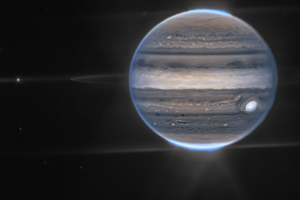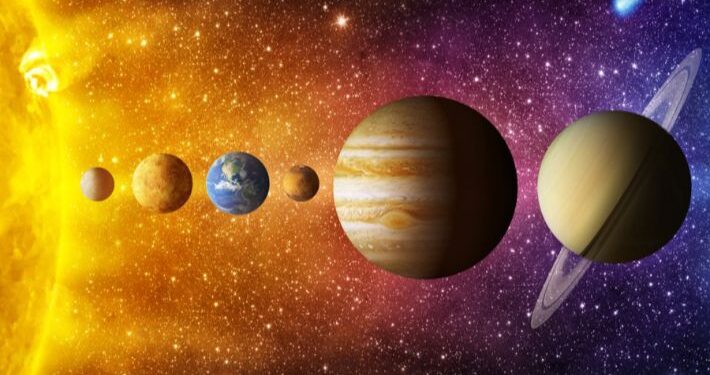Agencies-Gaza post
NASA launches new image of largest planet in solar system by James Webb
Image of Jupiter lensed by the James Webb Space Telescope (NASA)

The US space agency (NASA) published, Monday, images of Jupiter, which is the largest planet in the solar system, taken by the lens of the James Webb Space Telescope last July.
With its infrared camera, the James Webb Telescope – the world’s newest and largest space telescope – captured unprecedented views of Jupiter’s northern and southern lights, massive storms, winds and blazing aurora borealis.
“We didn’t expect it to be this good,” said planetary astronomer Emke De Pater, professor emeritus at the University of California, Berkeley.
De Pater led the Jupiter observations with Thierry Foucher, a professor at the Paris Observatory, as part of the international cooperation activities led by NASA with its partners (the European Space Agency and the Canadian Space Agency).
“It’s really cool to be able to see details about Jupiter, with its rings, small moons, and even galaxies in one picture,” he added.
The two images come from the Near Infrared Camera, which contains 3 specialized infrared filters that display details of the planet.
Since infrared light is invisible to the human eye, the light was made on the visible spectrum. Longer wavelengths of light appear redder and shorter wavelengths appear blue.
The NASA statement explained that the image consists of a set of images from the James Webb Telescope, and the aurora extends to high altitudes above the north and south poles of Jupiter.
Yellow and green show fog swirling around the north and south poles, while blue shows light reflected from a deeper main cloud.
The images show the Great Red Spot, a famous storm so large that it is capable of “swallowing” the Earth.
“The brightness indicates a high altitude, and the Great Red Spot has fog at high altitudes, as is the case in the equatorial region,” said Heidi Hamill, a scientist who specializes in observing the telescope.
She explained that the “spots” and “bright white lines” are likely cloud tops at very high altitudes for intense convective storms.
By contrast, the dark bands north of the equatorial region have little cloud cover, she added.
The James Webb Telescope spotted Jupiter with its faint rings – which are a million times weaker than the planet – and two small moons called Amalthea and Adrastea.
NASA launched the James Webb Telescope in December 2021 at a cost of 10 billion dollars, from the European Spaceport (Kourou) in French Guiana.
James Webb has been seeking the light emitted by the first stars and galaxies for nearly 14 billion years, and will accurately search for possible signs of life, knowing that it is located 1.6 million kilometers from Earth, and is considered the successor to the old Hubble Space Telescope.






















